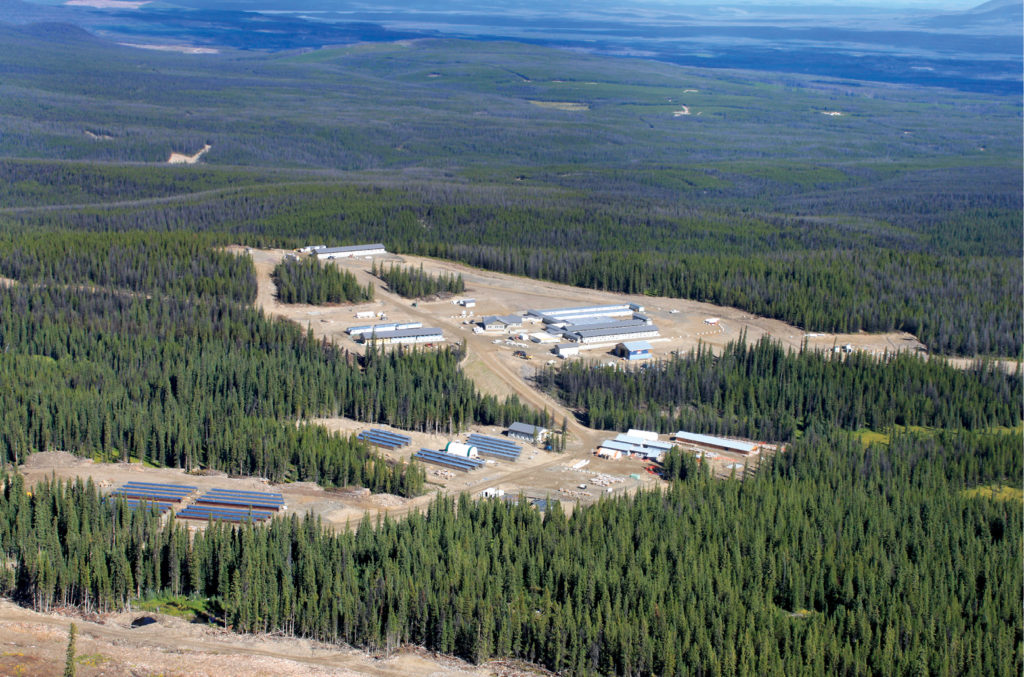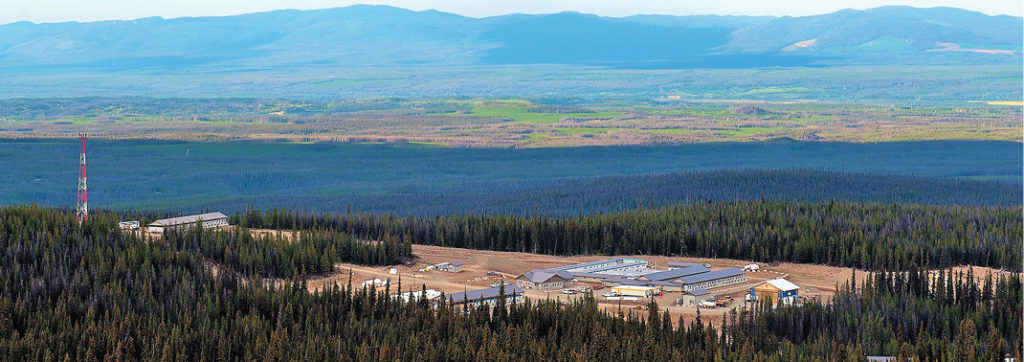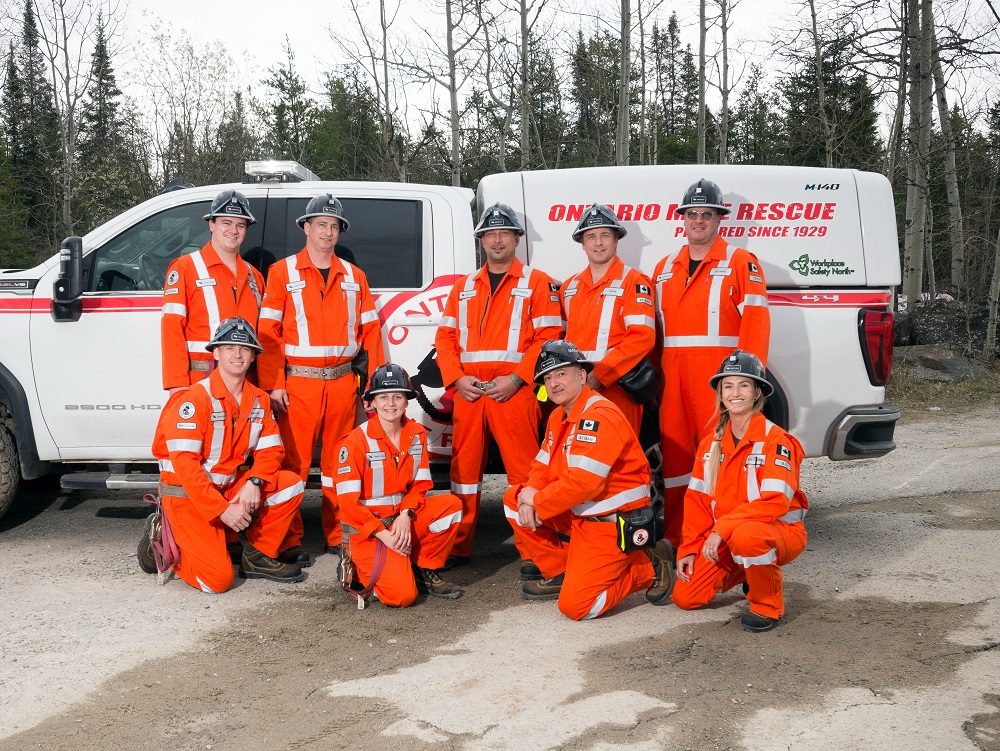Artemis Gold’s Aussie advantage
Junior’s disciplined, methodical approach paying off at Blackwater in BC

Steven Dean, chairman and CEO of Artemis Gold, has now spent more of his 35-year mining career to date in Canada than in his native Australia – 22 years vs. 13 years. But many aspects of his approach to the business can be traced directly back to the mining culture of his homeland.
“Australian junior companies in particular have a strong focus on early cash flow,” Dean says. “That has consistently been a differentiator between the Australian gold industry and the Canadian gold industry, which has historically focused on growing the size of deposits,” he adds.
“Any student of investment 101 knows that regardless of what business you’re in, whether it’s widgets or gold mining, the best returns on capital can often be achieved by using cash flow to grow your business.”
The focus on early cash flow, and along with that, staged development to reduce upfront capital costs, have held Dean in good stead throughout his career. In 1999, a cash flowing junior that he cofounded, PacMin Mining, was purchased by Teck Cominco – landing Dean the job of president of Teck Cominco, a position he held for three years.
More recently, that strategy also made Atlantic Gold a success. Under Dean’s leadership as chairman, CEO and founder, the junior got the Moose River gold mine in Nova Scotia into first-phase production for US$160 million, starting in 2017. Two years later, the company was purchased for $802 million by Aussie miner St. Barbara.
Now advancing the Blackwater gold project, 160 km southwest of Prince George in central British Columbia with Artemis Gold, Dean is planning to follow a very similar blueprint as the company looks to start production as early as the first quarter of 2024.
Blackwater
Blackwater provides a dramatic example of how staging can improve economics.
On paper, Blackwater wasn’t the most promising asset when junior Artemis Gold purchased it last year from New Gold in a cash, stock and streaming deal valued at $264 million.
The large, low-grade, open pit project came with a US$1.9-billion development price tag, according to a late 2013 feasibility study. At the time, Blackwater was envisaged as a 22 million t/y operation lasting 17 years. However, the economics were weak, with the study forecasting a pre-tax net present value (NPV) of $991 million and an internal rate of return of 11.3%. (That was at US$1,300 per oz. gold and US$22 per oz. silver, with a US$0.95 dollar).
Artemis, which was spun out of Atlantic Gold before that company was acquired by St. Barbara, believed Blackwater had potential to deliver more.
“It stood out for the scale – it’s a very large deposit, 12 million oz.,” Dean says. “It was in our backyard here in Vancouver, just outside of Prince George in central B.C. It was very accessible and that was actually critical because we were doing our due diligence in the early stages of Covid.”
Crucially, the company also believed a staged approach to development would improve the economics and bring the capex to a number that would be manageable even for a junior.
In June 2020, Artemis agreed to buy Blackwater for $140 million in cash upfront, another $50-million payment 12 months after the deal closed, and $20 million in shares giving New Gold a 9.9% stake in the company. It also granted New Gold an 8% gold stream that will fall to 4% after the gold miner receives its first 280,000 oz.
Days after Artemis closed the acquisition of Blackwater in August 2020, the junior released a prefeasibility study that cut the initial capex to $592 million from $2.5 billion (US$1.9 billion) and extended the mine life to 23 years. Instead of a mega mine that would start off at 22 million t/y – a rate that would make it one of the world’s largest gold operations – the study looked at an initial rate of 5.5 million t/y (15,000 t/d) for average annual production of 248,000 oz. gold for the first five years of mining. A phase 2 expansion costing $426 million would bring throughput to 12 million t/y in year 6 for annual production of 420,000 oz. gold, and a third $398-million stage would increase throughput to 20 million t/y in year 11 through the remainder of the mine life for production of 316,000 oz. gold per year.
Phase one all-in sustaining costs (in Canadian dollars) were projected at $668 per oz. of gold, rising slightly to $696 per oz. in the second phase, then $911 per oz. for the rest of the mine life.
The revised approach boosted the after-tax IRR to 35% and the project’s NPV to $2.2 billion, using a discount rate of 5%, US$1,541 per oz. gold, and US$19.60 per oz. silver. The payback period also declined to 2 years from 6.2 years.
Key to the improved economics was recognizing the potential of high-grade, near surface mineralization at Blackwater that could be mined as a starter pit. While the project’s reserve grade is sub-1 g/t gold (0.78 g/t gold equivalent), Artemis’s 2020 prefeasibility shows that starting off in higher grade mineralization found in the northern section of the pit will boost the average grade to 1.57 g/t gold for the first five years.
“When you start at a very large scale like the 2013 study considered, New Gold lost sight of the value. The high grade zone was there, but it was buried in a much bigger operation,” Dean explains. “That high grade starter zone really drives those paybacks. Once you’re established and in operation and using that cash flow to grow the business, it’s a much lower-risk proposition.”
Blackwater hosts proven and probable run-of-mine reserves of 334 million tonnes grading 0.78 g/t gold equivalent (0.75 g/t gold and 5.8 g/t silver) for 8 million oz. gold and 62.3 million oz. silver.
Measured and indicated resources (including reserves) total 11.7 million oz. gold and 122.4 million oz. silver in 597 million tonnes grading 0.61 g/t gold and 6.4 g/t silver, using a cutoff grade of 0.2 g/t gold.
The deposit is classified as a volcanic-hosted, epithermal-style gold-silver deposit. Core drilling has defined a very continuous mineralized zone extending at least 1,300 metres east-west and 950 metres north-south, and up to 600 metres thick.
The mineralized zone plunges shallowly to the north and northwest, and remains open at depth in the southwest part of the deposit, as well as to the northwest and west.
Scale vs. margin
While the improved economics are impressive, Dean notes that the original feasibility and the Artemis prefeasibility were completed in very different times and reflected different priorities.
“At the time the first study was completed, the industry was booming and the focus was more about scale – how big can you build something,” he says. “Today there’s much greater discipline, the industry’s in much better shape, balance sheets are in much better shape and cash flow is probably at a record right now in terms of mine cash flow margins industry wide.”
At presstime in late August, Artemis was getting ready to release a feasibility for Blackwater within weeks (it was later released in September).
Dean says there will be tweaks to the prefeasibility plan, overseen by new COO Jeremy Langford – another Australian who joined the company earlier this year. However, no major changes are expected.
In the meantime, Artemis has remained laser focused on reducing risk wherever it can. While it’s far from the only Canadian junior that has emphasized early cash flow and staged development, other aspects of Artemis’s approach – and previously of Atlantic Gold – are unique. For example, the use of grade control drilling – closely spaced drilling that provides up to 16 times more data than reserve drilling – in the starter pit. It’s also planning to control costs by arranging fixed-price EPC contracts for big ticket aspects of development.
On the grade control drilling side, initial results from a program that focused on the starter pit to 60 metres depth indicated the potential to add tonnage and ounces within the high-grade zone.
As part of the drill program, Artemis is also employing the LeachWELL assay method developed by Western Australia based Mineral Process Control. The assay method uses larger sample sizes (1 kg compared with the standard 50 g) to better understand the leachability of the ore. LeachWELL assay results have suggested a gold recovery of 96.7% and a silver recovery of 72.2%.
On the contracting side, the company is finalizing guaranteed maximum price contracts for major infrastructure at Blackwater. That includes a $236-million EPC contract with Ausenco for a 5.5 million t/y conventional carbon-in-pulp plant, and an $80-million contract with a consortium that includes local First Nations for a 135-km-long, 230 kV power line and substation. EPC contracts protect clients from cost escalation, whereas with more conventional EPCM contracts, the client bears that risk. Once final contracts are signed (binding memorandums of undertanding are in place for both contracts), the company expects around of 60% of the expected development capital will be protected from cost escalation and delays.
Full construction is expected to begin next year after final permits for the project are granted – likely in the first quarter of 2022. Early construction work permits were granted in July.

Artemis has already signed a preliminary agreement with two banks for $360 million in project debt financing. The company has signed IBAs with Nazko First Nation and is in talks with the Carrier Sekani First Nation. New Gold had previously signed an IBA with the Lhoosk’uz Dené and Ulkatcho First Nations, both of which have were a requirement for the environmental assessment. EA permits were approved in 2019.
People factor
Both the Atlantic and Artemis teams (which have many common members) have a heavy Australian contingent, but regardless of their origin, Dean speaks very highly of each individual.
The Artemis team includes Dean’s business partner and CFO Chris Batalha, COO Jeremy Langford, VP of projects Alastair Tiver, senior VP of corporate affairs Candice Alderson, and VP environment and social responsibility Ryan Todd.
“My focus when I’m starting a junior company is to take much of the standards, the policies, the governance and methodology of a senior company to the junior end of the business,” says Dean, who says his time with Teck Cominco provided a helpful education on those standards. “I’ve always prided myself whenever we put a team together that generally the team is from the ‘big end of town,’ and we apply the same approach and standards to the junior business.”
While Dean – a former investment banker in Australia before taking the leap into mining – has a history of building companies and assets that others want to own, he says Artemis isn’t building Blackwater specifically to attract a takeover bid.
But given the lack of large, new high-quality gold projects in the sector, it wouldn’t be surprising if the project attracts attention once it begins production.
“Things like the right jurisdictions, large scale deposits, easy access, good social – including Indigenous – relations, and exploration upside – that’s what everyone is looking for and in particular the senior companies,” he says. “That allows us to keep the option of creating shareholder value through an M&A transaction. That option’s always there if you can tick all those key boxes.”





Comments